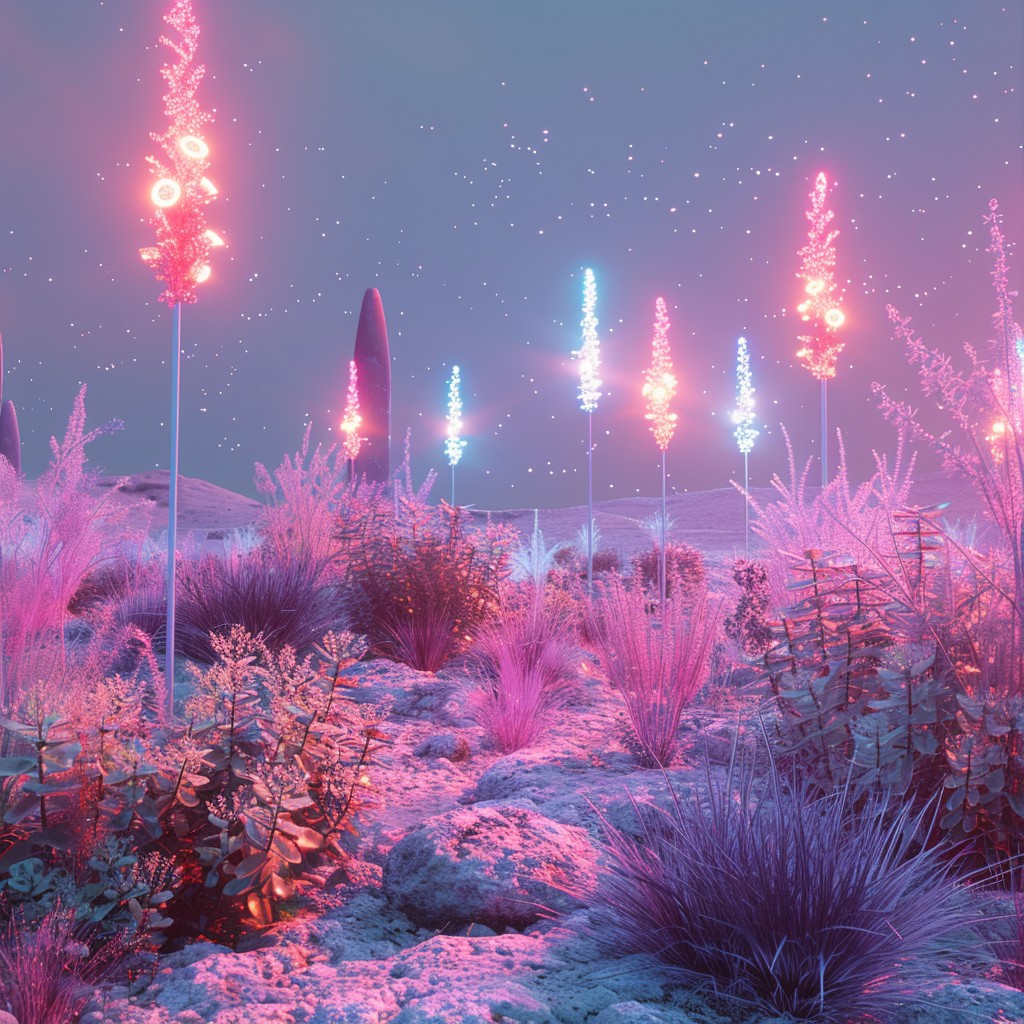Discover how psychedelic cacti can revolutionize your outdoor space, turning an ordinary garden into an extraordinary desert-inspired sanctuary.
Understanding Psychedelic Cacti: Beyond the Mystique
Psychedelic cacti represent some of nature’s most fascinating botanical specimens, with a rich history spanning millennia. The most notable varieties include the Lophophora genus, particularly Lophophora williamsii, and the Echinopsis family, comprising the majestic San Pedro (Echinopsis pachanoi), Peruvian torch (Echinopsis peruviana), and Bolivian torch (Echinopsis lageniformis). These remarkable plants have evolved to thrive in harsh desert conditions, developing striking architectural forms that make them exceptional focal points in modern garden designs.
- San Pedro Cactus: Characterised by its tall, columnar growth reaching heights of up to 6 metres
- Peruvian Torch: Distinguished by its bluish-green colouration and prominent ribs
- Bolivian Torch: Notable for its robust structure and impressive spine formations
Designing Your Desert-Inspired Sanctuary
Creating a desert-inspired garden with psychedelic cacti requires careful consideration of both aesthetics and growing conditions. These architectural plants serve as natural sculptural elements, capable of transforming ordinary spaces into extraordinary landscapes. When planning your garden, consider the natural growing patterns of these cacti – their vertical forms create dramatic silhouettes against walls or fences, while their structural qualities make them perfect centerpieces for rock gardens or minimalist designs.
To maximise visual impact, consider these design principles:Height variation – combine tall columnar species with lower-growing varieties for dynamic visual interest;Texture contrasts – pair smooth-skinned cacti with more heavily spined specimens;Spacing – allow adequate room for growth while maintaining aesthetic balance.
Cultural Significance and Contemporary Garden Design
The integration of psychedelic cacti into modern garden design represents a fascinating bridge between ancient traditions and contemporary aesthetics. These plants have been revered in Central and South American cultures for thousands of years, playing crucial roles in traditional ceremonies and spiritual practices. Today, their striking forms and historical significance add depth and intrigue to modern landscape designs, creating spaces that are both visually compelling and culturally rich.
Essential Care Guide for Psychedelic Cacti
- Soil Requirements: Well-draining mix specifically formulated for cacti
- Light Exposure: Full sun to partial shade, depending on species
- Watering Schedule: Minimal during growing season, reduced in winter
- Temperature: Most species prefer temperatures between 10-35°C
- Fertilisation: Light feeding during growing season with cactus-specific fertiliser
Legal Considerations and Responsible Cultivation
When cultivating psychedelic cacti in the UK, it’s crucial to understand and comply with relevant legislation. While many species are legal to grow for ornamental purposes, specific regulations govern their cultivation and use. Responsible gardeners should focus on the aesthetic and botanical aspects of these plants, maintaining proper documentation of their ornamental collection.
Creating Stunning Garden Compositions
The key to creating captivating garden compositions with psychedelic cacti lies in understanding their unique growth habits and visual characteristics. These plants work exceptionally well when combined with other desert-adapted species and architectural elements.
- Companion Plants: Agaves, aloes, and other succulents
- Hardscaping: Natural stone, gravel, and boulder features
- Lighting: Strategic placement of outdoor lighting to highlight architectural forms
- Container Gardens: Various pot sizes and materials for flexible design options
Transforming Your Garden: From Concept to Reality
Implementing your psychedelic cacti garden design requires careful planning and execution. Begin by preparing the site with appropriate drainage and soil composition. Consider creating raised beds or mounds to ensure optimal growing conditions. Installation should be carried out during warmer months to allow plants to establish before winter. Regular maintenance includes monitoring for signs of stress or disease, adjusting watering schedules seasonally, and protecting sensitive species during extreme weather conditions.
Expert Recommendations and Final Thoughts
Success with psychedelic cacti in UK gardens depends largely on species selection and microclimate management. Focus on hardier varieties that can withstand British weather conditions, such as certain Echinopsis species. Consider creating sheltered areas or using temporary winter protection for more sensitive specimens. Regular monitoring and adjustment of care routines will ensure these fascinating plants continue to thrive and enhance your garden’s aesthetic appeal throughout the years.
FAQ
What is the most powerful psychedelic plant?
In fact, salvia is reputed to be the most potent naturally occurring psychedelic or hallucinogenic drug with even more potent effects then drugs like mescaline and psilocybin.
Is Datura illegal in the US?
The cultivation of Datura is banned in some states and municipalities. An ornamental cultivar of D. metel. Of the nine species of Datura, only two of these herbaceous annuals/tender perennials are commonly used as ornamentals.
What did the Native Americans use as psychedelics?
Native Americans have used peyote as a religious sacrament for thousands of years (Jones, 2007; Stewart, 1987). In the late 1800s, the modern-day Native American Church (NAC) was formed, a key part of which is the ingestion of peyote as a religious sacrament during all-night prayer ceremonies (Jones, 2007).
What desert plant makes you hallucinate?
Datura wrightii. Datura wrightii, commonly known as sacred datura, is a poisonous perennial plant species and ornamental flower of the family Solanaceae native to the Southwestern United States and northwestern Mexico. It is sometimes used as a hallucinogen due to its psychoactive alkaloids.
What is the cactus that hits you?
You. They have a spring effect which makes it look as if they are attacking. You they stick to your skin and your clothes. And it is very painful.
Sources
[1] https://en.wikipedia.org/wiki/Psychoactive_cactus
[2] https://www.zamnesia.com/us/content/698-mescaline-cacti
[3] https://www.epiphanywellnesscenters.org/psychedelic-cactus/



